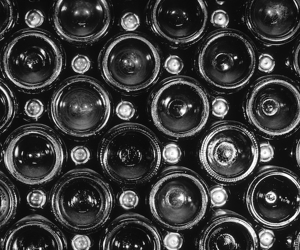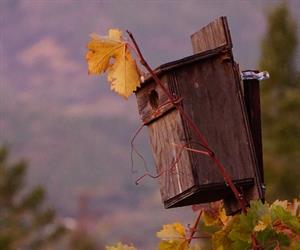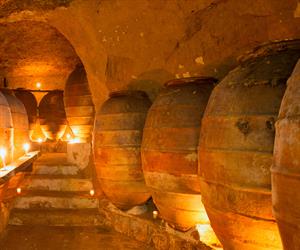Two years ago, we wrote on our blog about the “life cycle” of a glass of wine. The transformation from a bunch of grapes into a glass of wine is dramatic, but it is an easy-to-understand scientific process at the heart of it.
For today’s blog, we wanted to focus on the most crucial step of that process: fermentation.
Fermentation refers to the process all alcoholic beverages must undergo to turn sugar into alcohol. From Europe to Asia to Africa to the indigenous civilizations of South America, civilizations all over the world produced fermented beverages. The region dictated what they used: Vikings used honey; Egypt, Rome, and China used barley; South American civilizations used fruits or maize; North American ones used cactus.
However, whatever the starting material, the processes were remarkably similar: let the fruit or wheat sit covered for an extended period until it turns into alcohol. After thousands of years, we’ve certainly refined the process via tools and scientific methods, but the basic idea remains the same!
What Is Fermentation?
At its most basic, fermentation is when yeast compounds convert glucose into ethanol and carbon dioxide. Obviously, that’s not all there is—after all, a glass of wine is a lot more than just a glass of ethanol. Yeast creates all kinds of effects and processes resulting in different flavors, making the winemaking process so delightfully unpredictable (and an art). If you took two identical batches of grapes from the same block of vines, the yeast in each batch could still produce wines with subtle, noticeable differences.
Some of the compounds created by the fermentation process include:
- Esters: Though esters begin fermentation attached to sugar molecules, yeast breaks them apart from sugar during fermentation. Esters offer fruity, citrusy, and floral aromas.
- Tannins: Grape skin and seeds naturally contain tannins, but fermentation also enhances tannin extraction and alters their structure. Tannins offer dryness and astringency.
- Acetaldehyde: Yeast creates acetaldehyde in the last step before ethanol, but small amounts of acetaldehyde offer fruity aromas. Too much of it can give off the flavor of bruised apples.
- Sulfites: Yeast also produces sulfites in addition to ethanol to keep other microorganisms from thriving in the wine. This naturally protects wine from spoiling or oxidizing prematurely.
Using Wild & Cultured Yeast
So how do winemakers control how much of each compound shows up in wine? Through yeast suppression. At the beginning of the fermentation process, the grape “must” (the mass of unfermented grapes and grape juice) contains a variety of wild (or “ambient”) yeasts that are from the vineyard’s natural biodiversity.
However, some of these yeasts aren’t suitable for winemaking. That’s why vintners will use sulfites to suppress certain wild yeast strains and inoculate the must with a commercially developed cultured yeast. Cultured yeast will create a more predictable result, which is how winemakers can ensure the fermentation will result in an enjoyable wine year after year. But even with cultured yeast, there’s a lot of room for the wine to develop microbiodiversity via ambient yeast. Some winemakers believe that ambient yeast is how we can create a wine that genuinely reflects the terroir, the environment that produced the grapes. Making sure our wine reflects the unique characteristics of the land and soil is a central part of our winemaking philosophy at Theorem.
Making Room for the Unexpected
As a small producer, our goal isn’t to produce the same product every year. We want our wine to have subtle differences from harvest to harvest, reflecting not only the grapes, but the soil, the heat, the moisture, and the unique life that thrives on our mountain. The fermentation process reveals and emphasizes what makes our terroir so deeply special. Even with all our refinement and experience, this soil finds new ways to surprise us.
One of the hallmarks of science is repeatability. Every wine producer can create the same wine year after year with incredible consistency using proven tools and knowledge. But for Theorem, it’s those slight differences, those things that can’t be repeated, that make wine special. It’s more like magic than science, in that way.
Interested in joining Theorem for a tour? Contact us to schedule a tour, then join our mailing list!




